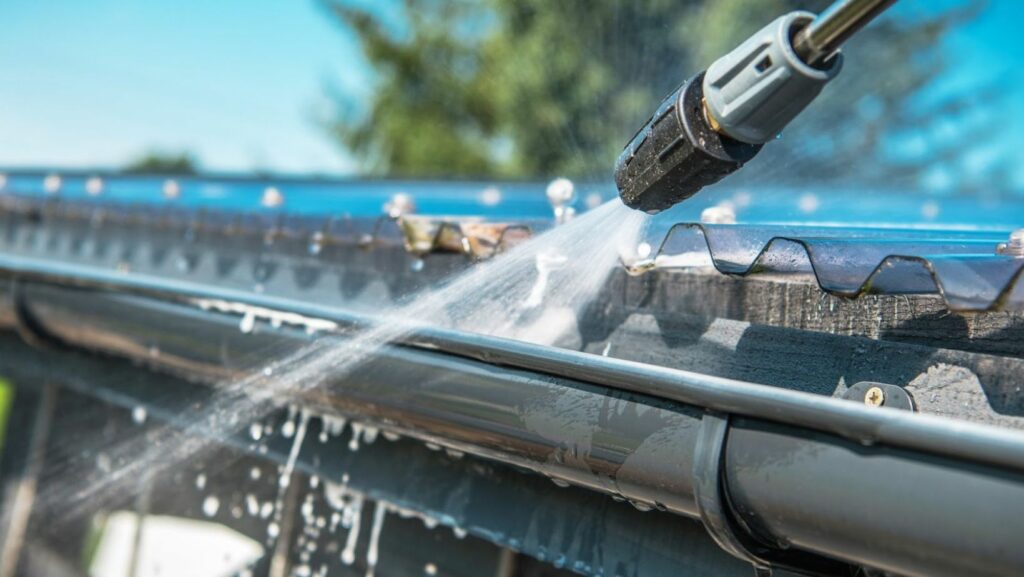Roof Cleaning 101: Understanding the Process and Its Importance

Roofs come in many shapes, sizes, fits, and finishes, each contributing a unique touch to your home’s character. The best roofs combine form and functionality to create a visually appealing roof that protects the inside of your home from the sun and elements.
Regardless of your roof type, it needs cleaning. Our roofs suffer damage from the outside world, and regular cleaning minimizes potential damage.
This article emphasizes the importance of roof cleaning and highlights crucial steps and tips to guide you through the roof cleaning process.
Understanding the Importance of Roof Cleaning
We are taught the importance of cleanliness from a young age. We’re told that things are neat, dirt and germs are away, and nothing is damaged. Similarly, your roof needs cleaning to ensure it properly does its job.
The most important reasons for roofs needing cleaning include:
- Cleaning prevents damage to the roof because of debris buildup (dirt, twigs, and leaves). This debris traps moisture, quickly becoming a moss and algae breeding ground. They will eventually eat away at shingles, drastically reducing their lifespan.
- A well-maintained roof improves curb appeal, making your home look neat and put together. Algae growth can make asphalt shingles look dark and streaky when left unattended.
- Regular roof cleaning prevents decay and also makes any existing damage visible. You won’t see cracks and damage underneath debris and moss. This prevents the integrity of your shingles and increases your roof’s lifespan.
The Roof Cleaning Process
Roof cleaning isn’t as simple as hosing a driveway and requires precautionary measures. Before cleaning begins, contact your local roofer for a roof inspection.

An initial inspection identifies damaged areas that need fixing before cleaning begins. Professional roofers take all necessary precautions, such as using fall protection equipment and wearing safety harnesses.
A roof can be cleaned in two ways: pressure washing or soft washing.
Pressure Washing
This involves using a high-pressure water jet to remove all debris, dirt, algae, and moss buildup on your roof. The roof cleaner will use special cleaning tools to loosen the dirt before washing it away with the pressure washer. Using the right water pressure is important to avoid damage to the shingles.
Soft Washing
Soft washing involves using a softer water jet to loosen the mess on the roof, combined with special cleaning solutions that kill algae and moss. A soft roof wash is gentler for shingles and is better suited for more delicate roofing materials.
Professional Roof Cleaning vs. DIY
Roof cleaning might sound simple, but a lot more is involved than you might think. It might be cheaper to clean it yourself, but the risk of damage or injury rises exponentially.
Hiring professional roof cleaners is a win-win for homeowners because you have the experts doing the job, and your roof is cleaned correctly. They use the right equipment and materials to prevent damage to your roof and might even find damage they can fix.

The benefits of hiring professional roofers include:
- Experienced people with necessary safety and cleaning equipment
- Effective results that thoroughly clean dirt, debris, algae, and moss from your roof.
- Certain roofing warranties require your roof to be professionally cleaned to remain valid.
Don’t Skip Roof Cleaning!
Roof cleaning is an essential aspect of home ownership. Your roof is constantly exposed to the elements, dirt, and debris. If left unattended, this could severely damage your roof and cost a pretty penny.
Roof cleaning is relatively simple, requiring high-pressure or soft-pressure water and the right cleaning solution to get the job done. It might sound easy, but it’s best to leave it to expert roofers who can help keep your roof clean and well-maintained.
A well-maintained roof is a long-lasting and visually appealing roof. Keeping it that way is incredibly simple and must not be overlooked at any cost.

 Boost Your Home’s Curb Appeal with Professional Exterior Cleaning Services
Boost Your Home’s Curb Appeal with Professional Exterior Cleaning Services  5 Practical Tips for Exterior Home Maintenance for Busy Homeowners
5 Practical Tips for Exterior Home Maintenance for Busy Homeowners  Why Vera Iconica Stands Out in the World of Wellness-Driven Architecture
Why Vera Iconica Stands Out in the World of Wellness-Driven Architecture